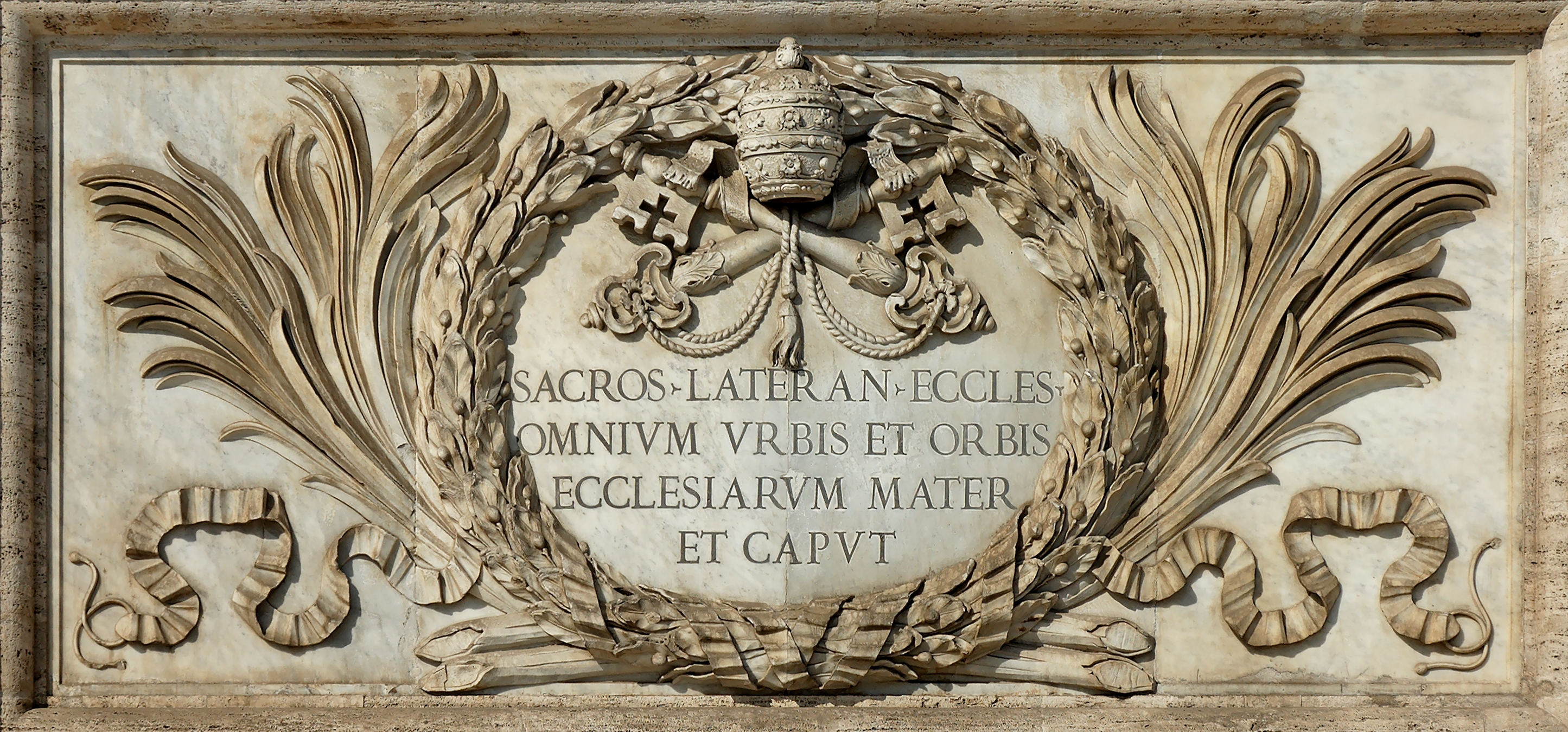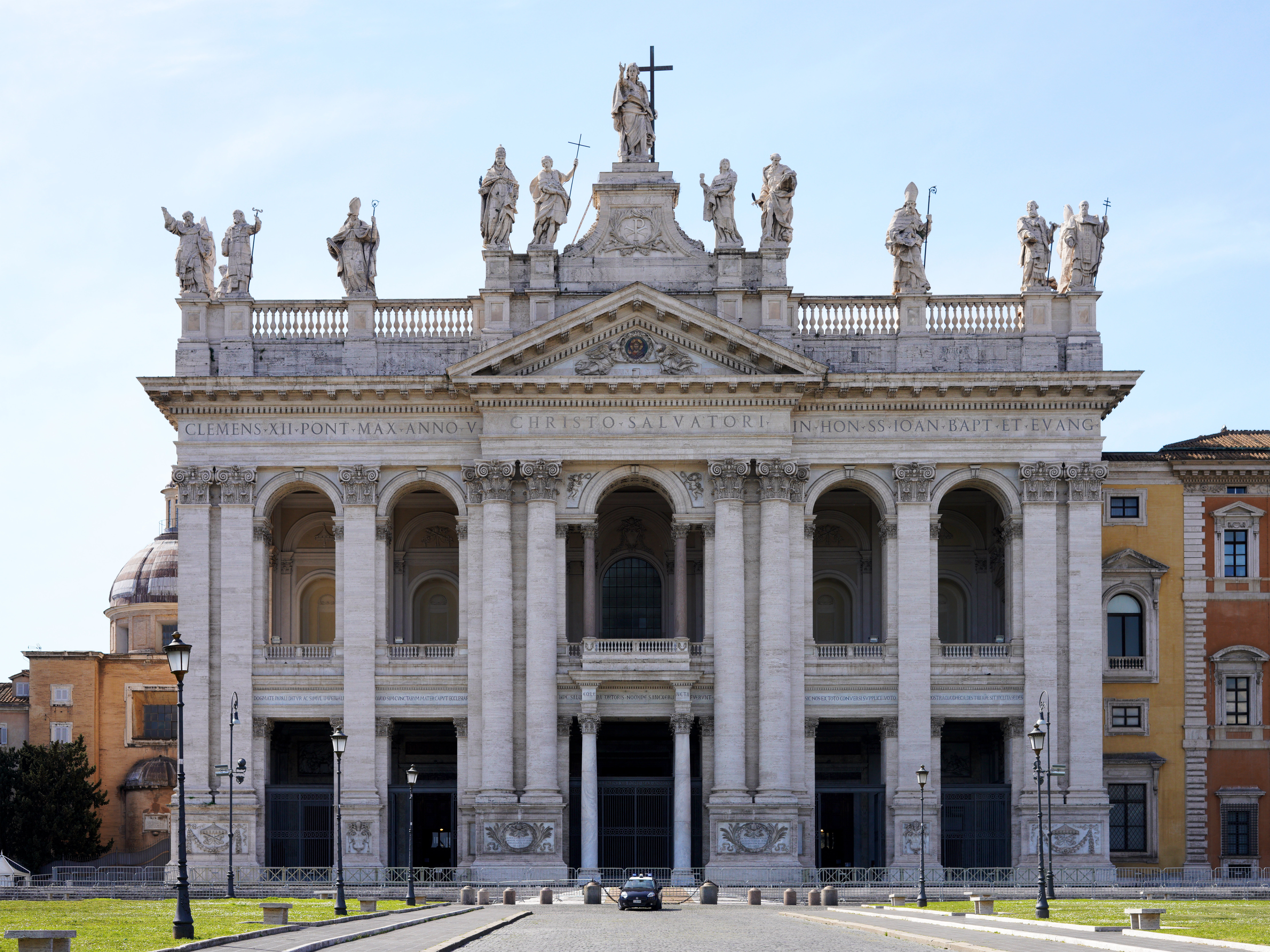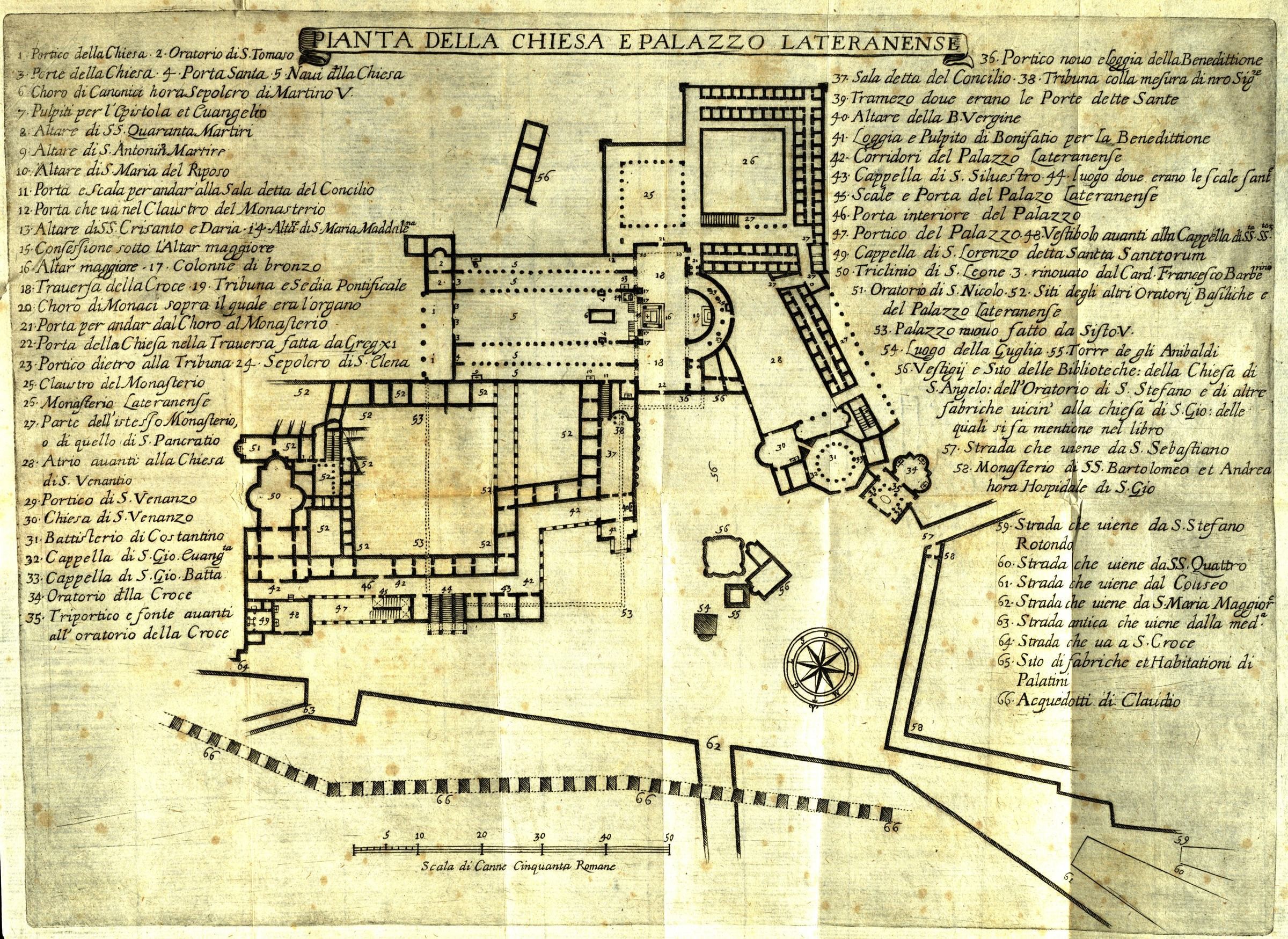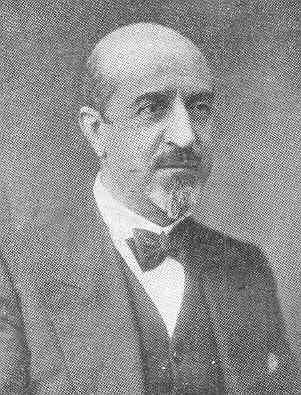|
Lateran Basilica
The Archbasilica of Saint John Lateran (officially the ''Major Papal, Patriarchal and Roman Archbasilica, Metropolitan and Primatial Cathedral of the Most Holy Savior and Saints John the Baptist and the Evangelist in Lateran, Mother and Head of All Churches in Rome and in the World''), commonly known as the Lateran Basilica or Saint John Lateran, is the Catholic cathedral of the Diocese of Rome in the city of Rome, Italy. It serves as the seat of the bishop of Rome, the pope. The only "''arch''basilica" in the world, it lies outside of Vatican City proper, which is located approximately northwest. Nevertheless, as properties of the Holy See, the archbasilica and its adjoining edifices enjoy an extraterritorial status from Italy, pursuant to the terms of the Lateran Treaty of 1929. Dedicated to Christ the Savior, in honor of John the Baptist and John the Evangelist, the place name – (Lateran) – comes from an ancient Roman family (''gens''), whose palace (''domus'') grounds o ... [...More Info...] [...Related Items...] OR: [Wikipedia] [Google] [Baidu] |
Alessandro Galilei
Alessandro Maria Gaetano Galilei (25 August 1691 – 21 December 1737) was an Italian mathematician, architect and theorist, and a distant relative of Galileo Galilei. Biography Born in Florence to the patrician Galilei family, he received architectural and engineering training from , an outstanding figure of the Accademia dei Nobili, who lectured and wrote a treatise on perspective, fortifications and artillery. With him young Galilei worked on the study of building techniques, stereometry, hydraulics. Visit to England Visiting English ''milord''s were impressed with the classicism of his early designs, and he was invited by a party of English to London in 1714. There he participated in a variety of architectural projects, most notably collaborating with the civic engineer Nicholas Dubois. The only other notable Italian architect in London at the time was Giacomo Leoni. The two architects shared a classicising bent that appealed to the English but was at odds with current Baroq ... [...More Info...] [...Related Items...] OR: [Wikipedia] [Google] [Baidu] |
Properties Of The Holy See
The properties of the Holy See are regulated by the 1929 Lateran Treaty signed with the Kingdom of Italy (1861–1946), Kingdom of Italy. Although part of Italy, Italian territory, some of them enjoy extraterritoriality similar to those of foreign embassies, including tax exemptions.see Article 13, 14, 15 and 16 in thLateran Treaty Nonetheless, those visiting these properties are generally required to follow the immigration rules of Italy. For example, American seminarians at the Pontifical North American College need an Italian visa, despite residing, and studying, in extraterritorial property of the Holy See. Outside Vatican City but inside Rome Extraterritorial property * Archbasilica of Saint John Lateran (''Arcibasilica di San Giovanni in Laterano'') * Basilica di Santa Maria Maggiore, Basilica of Saint Mary Major (''Basilica di Santa Maria Maggiore'') * Basilica of Saint Paul Outside the Walls (''Basilica di San Paolo fuori le Mura'') (the complex includes also the Bene ... [...More Info...] [...Related Items...] OR: [Wikipedia] [Google] [Baidu] |
Lateran Palace
The Apostolic Palace of the Lateran (; ), informally the Lateran Palace (), is an ancient palace of the Roman Empire and later the main pope, papal residence in Rome. Located on Saint John's Square in Lateran on the Caelian Hill, the palace is adjacent to the Archbasilica of Saint John Lateran, the cathedral church of Rome. The wealthy Lateran (''Laterani'') family held the palace estate during the Roman Empire, and the estate eventually came into the hands of the Emperor Constantine the Great who gifted it to Pope Damasus I who was residing at the Basilica of Santa Pudenziana. From the fourth century, the palace was the principal residence of the popes, and continued so for about a thousand years until the Apostolic Residence ultimately moved to the nearby Vatican. The palace is now used by the Vatican Historical Museum, which illustrates the history of the Papal States. The palace also houses the offices of the Diocese of Rome, as well as the residential apartments of the Car ... [...More Info...] [...Related Items...] OR: [Wikipedia] [Google] [Baidu] |
Domus
In ancient Rome, the ''domus'' (: ''domūs'', genitive: ''domūs'' or ''domī'') was the type of town house occupied by the upper classes and some wealthy freedmen during the Republican and Imperial eras. It was found in almost all the major cities throughout the Roman territories. The modern English word '' domestic'' comes from Latin ''domesticus'', which is derived from the word ''domus''. Along with a ''domus'' in the city, many of the richest families of ancient Rome also owned a separate country house known as a villa. Many chose to live primarily, or even exclusively, in their villas; these homes were generally much grander in scale and on larger acres of land due to more space outside the walled and fortified city. The elite classes of Roman society constructed their residences with elaborate marble decorations, inlaid marble paneling, door jambs and columns as well as expensive paintings and frescoes. Many poor and lower-middle-class Romans lived in crowded, d ... [...More Info...] [...Related Items...] OR: [Wikipedia] [Google] [Baidu] |
Gens
In ancient Rome, a gens ( or , ; : gentes ) was a family consisting of individuals who shared the same ''nomen gentilicium'' and who claimed descent from a common ancestor. A branch of a gens, sometimes identified by a distinct cognomen, was called a ''stirps'' (: ''stirpes''). The gens was an important social structure at Rome and throughout ''Italia'' during the period of the Roman Republic. Much of individuals' social standing depended on the gens to which they belonged. Certain gentes were classified as patrician, others as plebeian; some had both patrician and plebeian branches. The importance of the gens as a social structure declined considerably in imperial times, although the ''gentilicium'' continued to define the origins and dynasties of the ancient Romans, including the emperors. ''Harper's Dictionary of Classical Literature and Antiquities'', Second Edition, Harry Thurston Peck, Editor (1897).'' Oxford Classical Dictionary'', 2nd Ed. (1970). Origins The word ... [...More Info...] [...Related Items...] OR: [Wikipedia] [Google] [Baidu] |
Lateran
250px, Basilica and Palace - side view Lateran and Laterano are names for an area of Rome, and the shared names of several buildings in Rome. The properties were once owned by the Lateranus family of the Roman Empire. The Laterani lost their properties to Emperor Constantine who allegedly gave them to the Bishop of Rome though this traditional report has been most likely based on the document Donation of Constantine which has been proven to be a forgery. The most famous Lateran buildings are the Lateran Palace, once called the Palace of the Popes, and the Archbasilica of Saint John Lateran, the cathedral of Rome, which while in Rome, and not in the Vatican, are properties of the Holy See, and have extraterritorial privileges as a result of the 1929 Lateran Treaty with Italy. As the official ecclesiastical seat of the pope, Saint John Lateran contains the papal ''cathedra''. The Lateran is Christendom's earliest basilica. Attached to the basilica is the Lateran Baptistery, on ... [...More Info...] [...Related Items...] OR: [Wikipedia] [Google] [Baidu] |
Lateran Treaty
The Lateran Treaty (; ) was one component of the Lateran Pacts of 1929, agreements between Italy under Victor Emmanuel III and Benito Mussolini and the Holy See under Pope Pius XI to settle the long-standing Roman question. The treaty and associated pacts were named after the Lateran Palace where they were signed on 11 February 1929, and the Italian Parliament ratified them on 7 June 1929. The treaty recognised Vatican City as an independent state under the sovereignty of the Holy See. Italy also agreed to give the Catholic Church financial compensation for the loss of the Papal States. In 1948, the Lateran Treaty was recognized in the Constitution of Italy as regulating the relations between the Italian Republic and the Catholic Church. Constitution of Italy, Article 7. While the treaty was significantly revised in 1984, ending the status of Catholicism as the sole state religion of Italy, the Vatican remains a distinct sovereign entity to the present day. Content The Late ... [...More Info...] [...Related Items...] OR: [Wikipedia] [Google] [Baidu] |
Extraterritoriality
In international law, extraterritoriality or exterritoriality is the state of being exempted from the jurisdiction of local law, usually as the result of diplomatic negotiations. Historically, this primarily applied to individuals, as jurisdiction was usually claimed on peoples rather than on lands. Extraterritoriality can also be partly applied to physical places. For example, such is the immunity granted to diplomatic missions, military bases of foreign countries, or offices of the United Nations. The three most common cases recognized today internationally relate to the persons and belongings of foreign heads of state and head of government, government, the persons and belongings of ambassadors and other diplomats, and ships in international waters. Forms In the past, pre-modern states generally claimed sovereignty over persons, creating something known as personal jurisdiction. As people move between borders, this led, in the framework of a territorial jurisdiction, to cer ... [...More Info...] [...Related Items...] OR: [Wikipedia] [Google] [Baidu] |
Properties Of The Holy See
The properties of the Holy See are regulated by the 1929 Lateran Treaty signed with the Kingdom of Italy (1861–1946), Kingdom of Italy. Although part of Italy, Italian territory, some of them enjoy extraterritoriality similar to those of foreign embassies, including tax exemptions.see Article 13, 14, 15 and 16 in thLateran Treaty Nonetheless, those visiting these properties are generally required to follow the immigration rules of Italy. For example, American seminarians at the Pontifical North American College need an Italian visa, despite residing, and studying, in extraterritorial property of the Holy See. Outside Vatican City but inside Rome Extraterritorial property * Archbasilica of Saint John Lateran (''Arcibasilica di San Giovanni in Laterano'') * Basilica di Santa Maria Maggiore, Basilica of Saint Mary Major (''Basilica di Santa Maria Maggiore'') * Basilica of Saint Paul Outside the Walls (''Basilica di San Paolo fuori le Mura'') (the complex includes also the Bene ... [...More Info...] [...Related Items...] OR: [Wikipedia] [Google] [Baidu] |
Vatican City
Vatican City, officially the Vatican City State (; ), is a Landlocked country, landlocked sovereign state and city-state; it is enclaved within Rome, the capital city of Italy and Bishop of Rome, seat of the Catholic Church. It became independent from the Kingdom of Italy in 1929 with the Lateran Treaty. It is governed by the Holy See, itself a Legal status of the Holy See, sovereign entity under international law, which maintains Temporal power of the Holy See, its temporal power, governance, diplomacy, and spiritual independence. ''Vatican'' is also used as a metonym for the pope, the central authority of the Roman Catholic Church, and the Holy See and the Roman Curia. With an area of and a population of about 882 in 2024, it is the List of countries and dependencies by area, smallest sovereign state in the world both by area and List of countries and dependencies by population, by population. It is among the List of national capitals by population, least populated capit ... [...More Info...] [...Related Items...] OR: [Wikipedia] [Google] [Baidu] |
Pope
The pope is the bishop of Rome and the Head of the Church#Catholic Church, visible head of the worldwide Catholic Church. He is also known as the supreme pontiff, Roman pontiff, or sovereign pontiff. From the 8th century until 1870, the pope was the sovereign or head of state of the Papal States, and since 1929 of the much smaller Vatican City state. From a Catholic viewpoint, the primacy of the bishop of Rome is largely derived from his role as the apostolic successor to Saint Peter, to whom Petrine primacy, primacy was conferred by Jesus, who gave Peter the Keys of Heaven and the powers of "binding and loosing", naming him as the "rock" upon which the Church would be built. The current pope is Leo XIV, who was elected on 8 May 2025 on the second day of the 2025 papal conclave. Although his office is called the papacy, the ecclesiastical jurisdiction, jurisdiction of the episcopal see is called the Holy See. The word "see" comes from the Latin for 'seat' or 'chair' (, refe ... [...More Info...] [...Related Items...] OR: [Wikipedia] [Google] [Baidu] |
Cathedra
A ''cathedra'' is the throne of a bishop in the early Christian basilica. When used with this meaning, it may also be called the bishop's throne. With time, the related term ''cathedral'' became synonymous with the "seat", or principal church, of a bishopric. The word in modern languages derives from a normal Greek word καθέδρα 'kathédra'' meaning "seat", with no special religious connotations, and the Latin ''cathedra'', specifically a chair with arms. It is a symbol of the bishop's teaching authority in the Catholic Church, the Orthodox Church, and the Anglican Communion churches. Etymology The English word "cathedra", plural cathedrae, comes from the Latin word for "armchair", itself derived from the Greek (καθέδρα). After the 4th century, the term's Roman connotations of authority reserved for the Emperor were adopted by bishops. It is closely related to the etymology of the word chair. ''Cathedrae apostolorum'' The term appears in early Chr ... [...More Info...] [...Related Items...] OR: [Wikipedia] [Google] [Baidu] |






